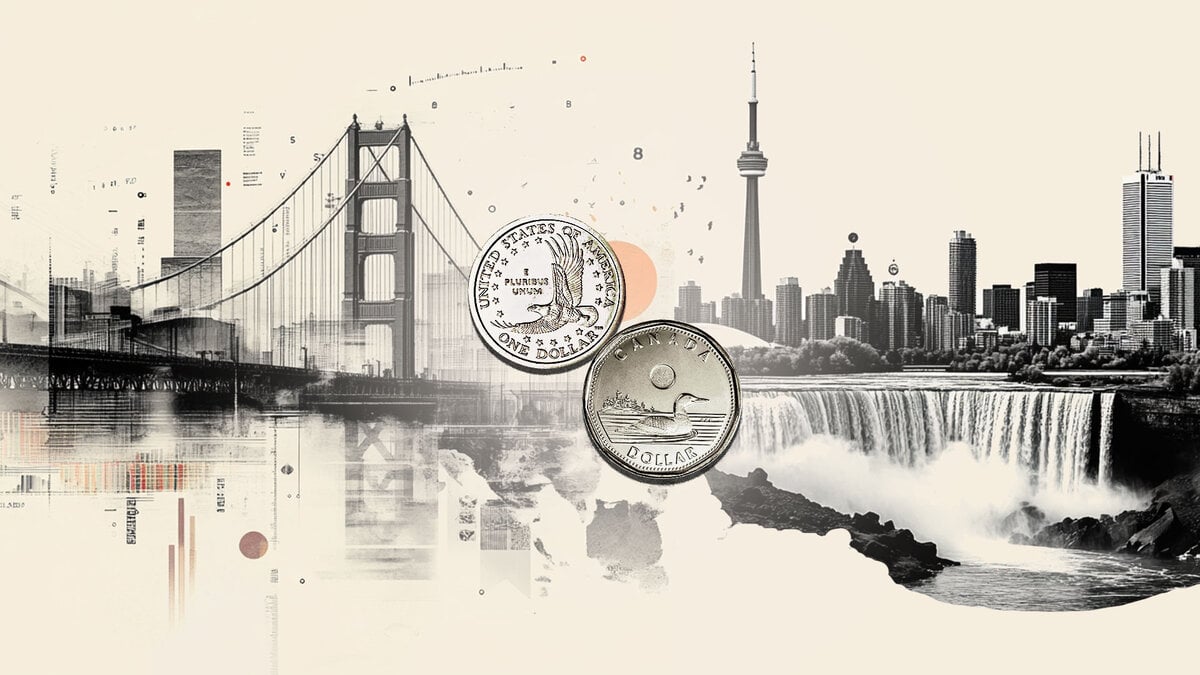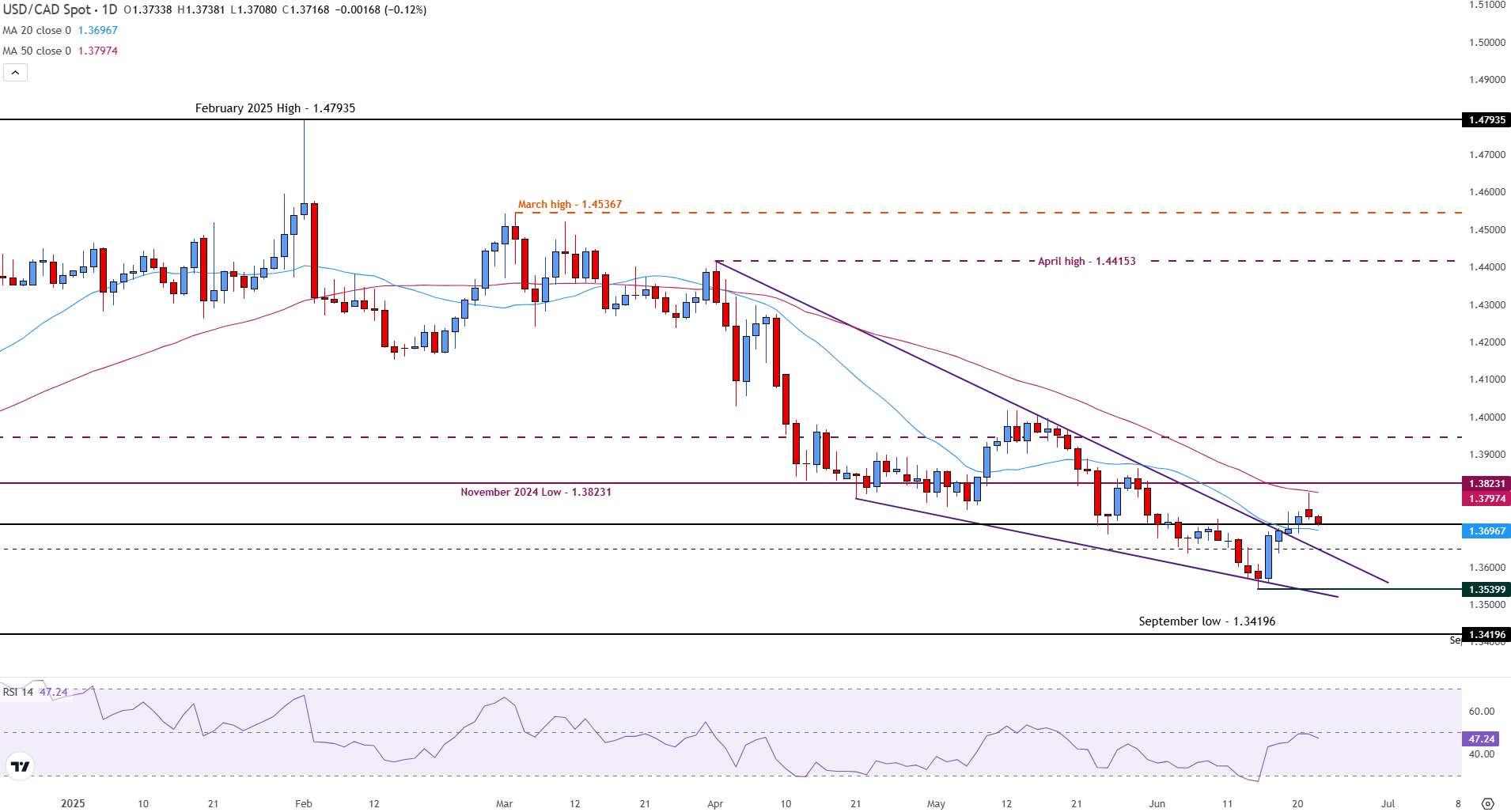Created
: 2025.06.24














![]() 2025.06.24 21:59
2025.06.24 21:59
The Canadian Dollar (CAD) is reacting to the latest Consumer Price Index (CPI) data released by Statistics Canada on Tuesday, which showed inflation steadying in May.
USD/CAD is trading around 1.3710 following the release, with markets reassessing rate cut prospects.
Canada's May inflation data showed that the BoC Core Consumer Price Index (CPI) rose by 0.6% (MoM) in May, slightly above the previous reading of 0.5%. The YoY figure held steady at 2.5%.
The headline CPI matched expectations, rising 0.6% (MoM) and 1.7% (YoY).
The BoC Core CPI, which strips out volatile components such as food and energy, is viewed as a more accurate measure of underlying inflation.
With the BoC holding its key rate at 2.75% during the June policy meeting, BoC Governor Tiff Macklem raised concerns over tariffs and rising input costs. The Governor stated that the central bank is closely monitoring both the headline CPI and business sentiment.
The stronger monthly core print signals persistent price pressures, which could lead the Bank of Canada to delay rate cuts as it continues to monitor inflation dynamics and their implications for monetary policy. With Core CPI still about 2.5%, Canadian OIS market data shows a 38% probability of a rate hold at the July meeting.
USD/CAD to after the release, as traders dialed back expectations for BoC easing in the coming months unless the economy shows signs of weakening.
The pair continues to trade between the 20-day Simple Moving Average (SMA), providing support at 1.3697, and the 50-day SMA, which acts as resistance at 1.3798.

The Bank of Canada (BoC), based in Ottawa, is the institution that sets interest rates and manages monetary policy for Canada. It does so at eight scheduled meetings a year and ad hoc emergency meetings that are held as required. The BoC primary mandate is to maintain price stability, which means keeping inflation at between 1-3%. Its main tool for achieving this is by raising or lowering interest rates. Relatively high interest rates will usually result in a stronger Canadian Dollar (CAD) and vice versa. Other tools used include quantitative easing and tightening.
In extreme situations, the Bank of Canada can enact a policy tool called Quantitative Easing. QE is the process by which the BoC prints Canadian Dollars for the purpose of buying assets - usually government or corporate bonds - from financial institutions. QE usually results in a weaker CAD. QE is a last resort when simply lowering interest rates is unlikely to achieve the objective of price stability. The Bank of Canada used the measure during the Great Financial Crisis of 2009-11 when credit froze after banks lost faith in each other's ability to repay debts.
Quantitative tightening (QT) is the reverse of QE. It is undertaken after QE when an economic recovery is underway and inflation starts rising. Whilst in QE the Bank of Canada purchases government and corporate bonds from financial institutions to provide them with liquidity, in QT the BoC stops buying more assets, and stops reinvesting the principal maturing on the bonds it already holds. It is usually positive (or bullish) for the Canadian Dollar.
![]()
Created
: 2025.06.24
![]()
Last updated
: 2025.06.24

FXStreet is a forex information website, delivering market analysis and news articles 24/7.
It features a number of articles contributed by well-known analysts, in addition to the ones by its editorial team.
Founded in 2000 by Francesc Riverola, a Spanish economist, it has grown to become a world-renowned information website.
We hope you find this article useful. Any comments or suggestions will be greatly appreciated.
We are also looking for writers with extensive experience in forex and crypto to join us.
please contact us at [email protected].
Disclaimer:
All information and content provided on this website is provided for informational purposes only and is not intended to solicit any investment. Although all efforts are made in order to ensure that the information is correct, no guarantee is provided for the accuracy of any content on this website. Any decision made shall be the responsibility of the investor and Myforex does not take any responsibility whatsoever regarding the use of any information provided herein.
The content provided on this website belongs to Myforex and, where stated, the relevant licensors. All rights are reserved by Myforex and the relevant licensors, and no content of this website, whether in full or in part, shall be copied or displayed elsewhere without the explicit written permission of the relevant copyright holder. If you wish to use any part of the content provided on this website, please ensure that you contact Myforex.
Myforex uses cookies to improve the convenience and functionality of this website. This website may include cookies not only by us but also by third parties (advertisers, log analysts, etc.) for the purpose of tracking the activities of users. Cookie policy